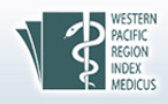Abstract:
Objective To investigate the oral health service demands and utilization among school-age children in Xiangfang district of Harbin, and to explore the related influencing factors. Methods A total of 7 944 children aged 6-11 were investigated for oral health status through questionnaire survey in Xiangfang District, Harbin. Descriptive analysis, Chi-square test, nonparametric test and Logistic regression were used to analyze the oral health service demands and utilization of school-age children. Results The rate of caries, unfilled caries, malocclusion and traumatic dental injuries were 89.7%, 60.7%, 59.3% and 12.5%, respectively. In the past 12 months, 53.8% of children had toothache. The rate of seeking medical treatment in stomatology department was 31.6%, with the primary reason being treatment (47.6%), while the rate of preventive dental treatment was 15.6%. Multivariate analysis showed that girls, father's education being high school or technical secondary school, father's education higher or equal to junior college, poor oral health evaluation, high score on oral knowledge and oral attitude, brushing teeth once a day, brushing teeth twice a day or more, having attended oral health courses, having toothache experience, having dental trauma experience, suffering from dental caries were more likely to visit the oral clinics (OR=1.11, 1.17, 1.50, 0.80, 1.07, 1.21, 1.60, 2.27, 1.28, 1.49, 1.54, 1.67, P < 0.05). Conclusion In Xiangfang District of Harbin, there is a large demand for oral health services for school-age children, however, both of the utilization rate and the preventive medical treatment rate is low. Many factors affect the utilization of oral health services for children. It is suggested that targeted measures should be taken to improve the utilization level of school-age children's health resources.











